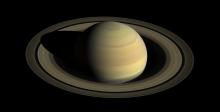Listen to today's episode of StarDate on the web the same day it airs in high-quality streaming audio without any extra ads or announcements. Choose a $8 one-month pass, or listen every day for a year for just $30.
You are here
Vernal Equinox
Winter is about to meet its end. Spring arrives in the northern hemisphere in the wee hours of tomorrow morning.
That moment is known as the vernal equinox. And over the centuries, it’s played a central role in the development of the calendar.
In fact, people discovered the length of the year — and even the concept of the year — by following the rhythms of the seasons. Spring brought new life to the world after the dark winter, so it became the most important seasonal marker. Indeed, the period between vernal equinoxes defined the length of the year. This period is known as the tropical year, and it lasts 365 days, 5 hours, 48 minutes, and 45 seconds.
That extra dab of time beyond 365 days has given calendar makers fits. It’s forced them to add extra days, and even to revamp the entire calendar.
In ancient Rome, for example, the astronomer Sisogenes recommended adding an extra day every fourth year. Julius Caesar accepted the idea and instituted a new calendar in 46 B.C.
That worked for a while. But by the 16th century, the calendar had slipped out of sync with the equinox by about 11 days. That was a particular problem for Christians, who used the equinox to calculate the date of Easter. So Pope Gregory XIII made one more change: He dropped three leap years from every four centuries.
We still use the Gregorian calendar today — a calendar that’s calibrated by the vernal equinox.
Script by Damond Benningfield






